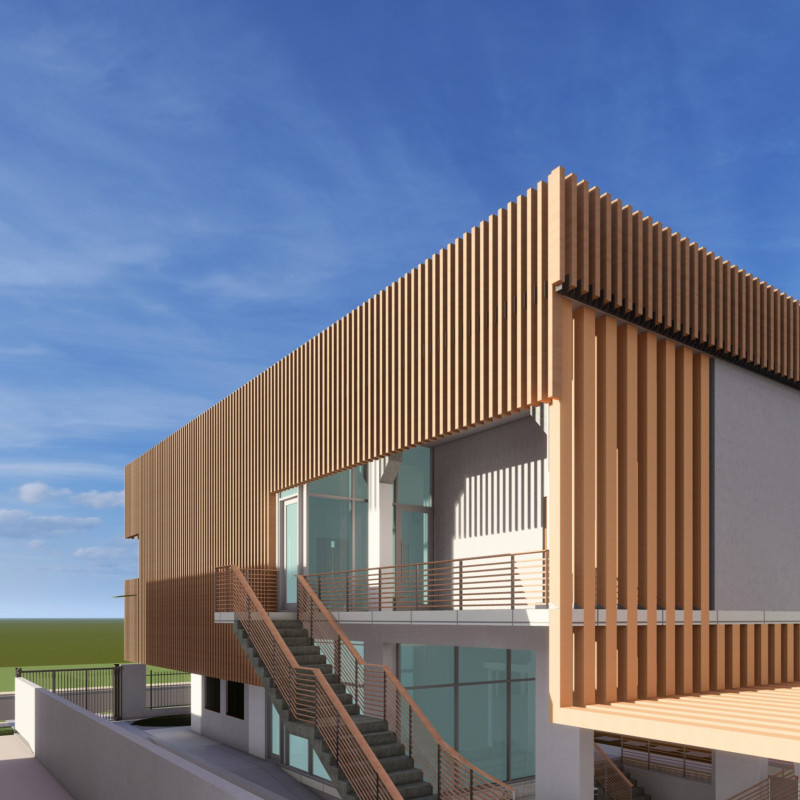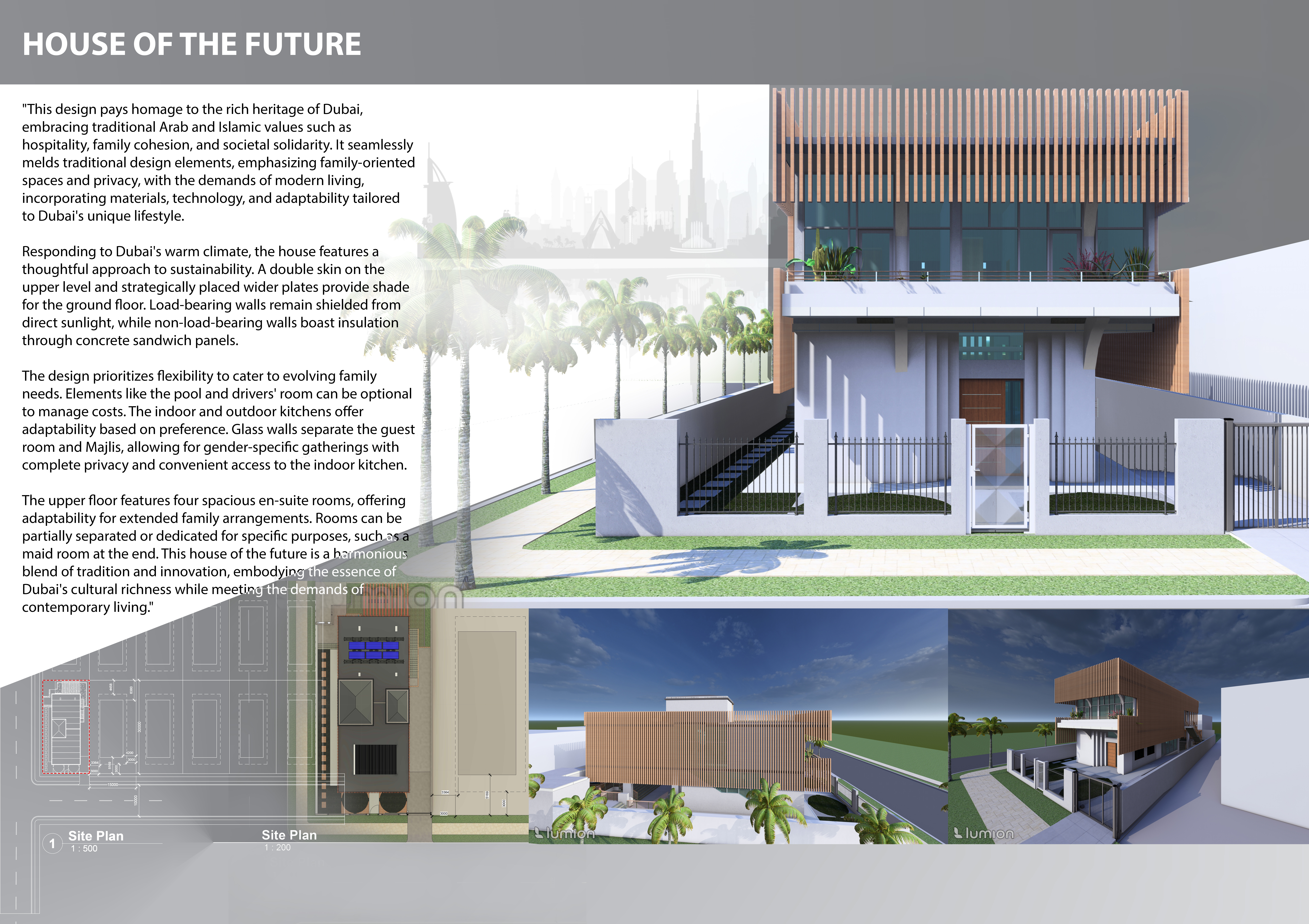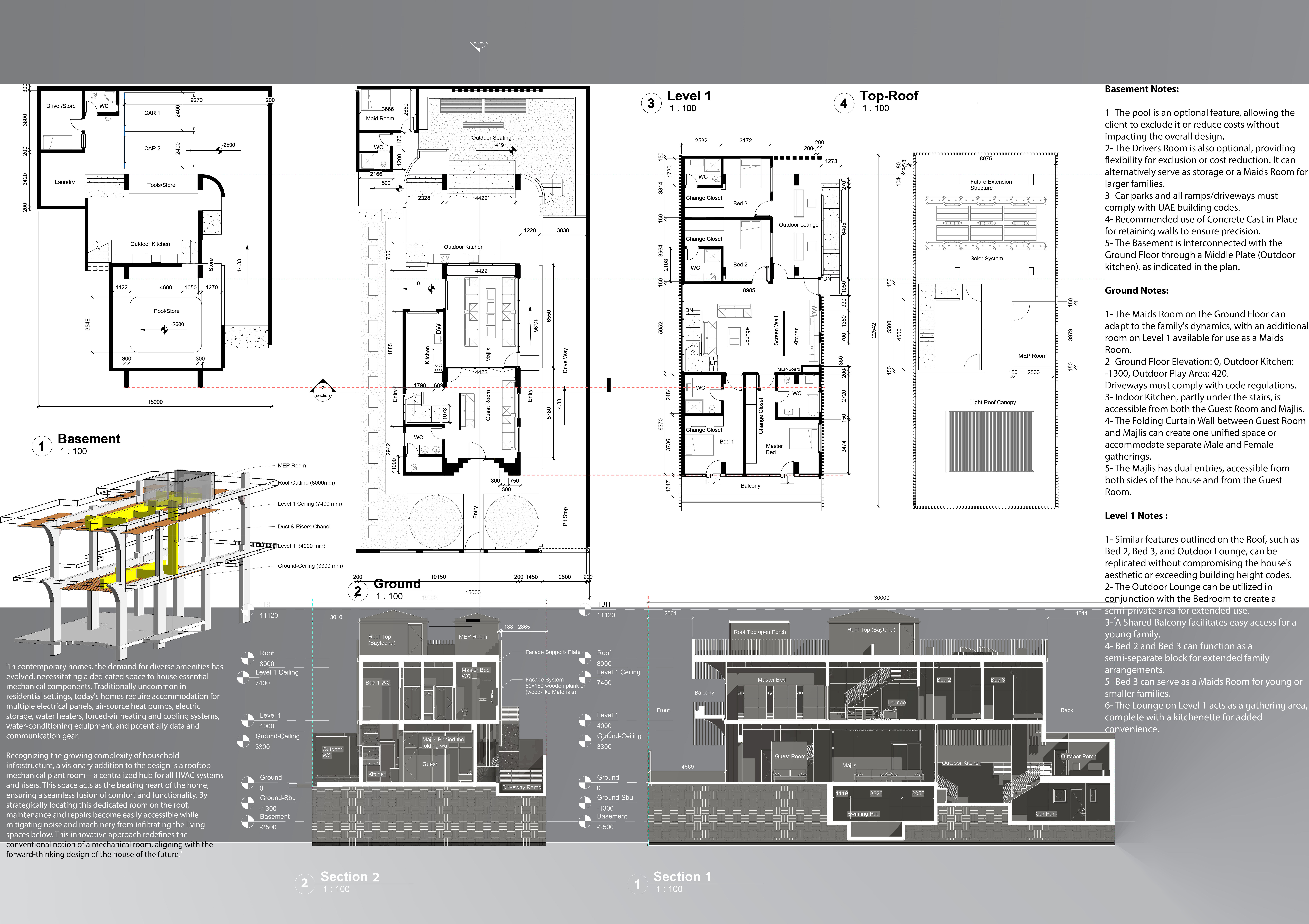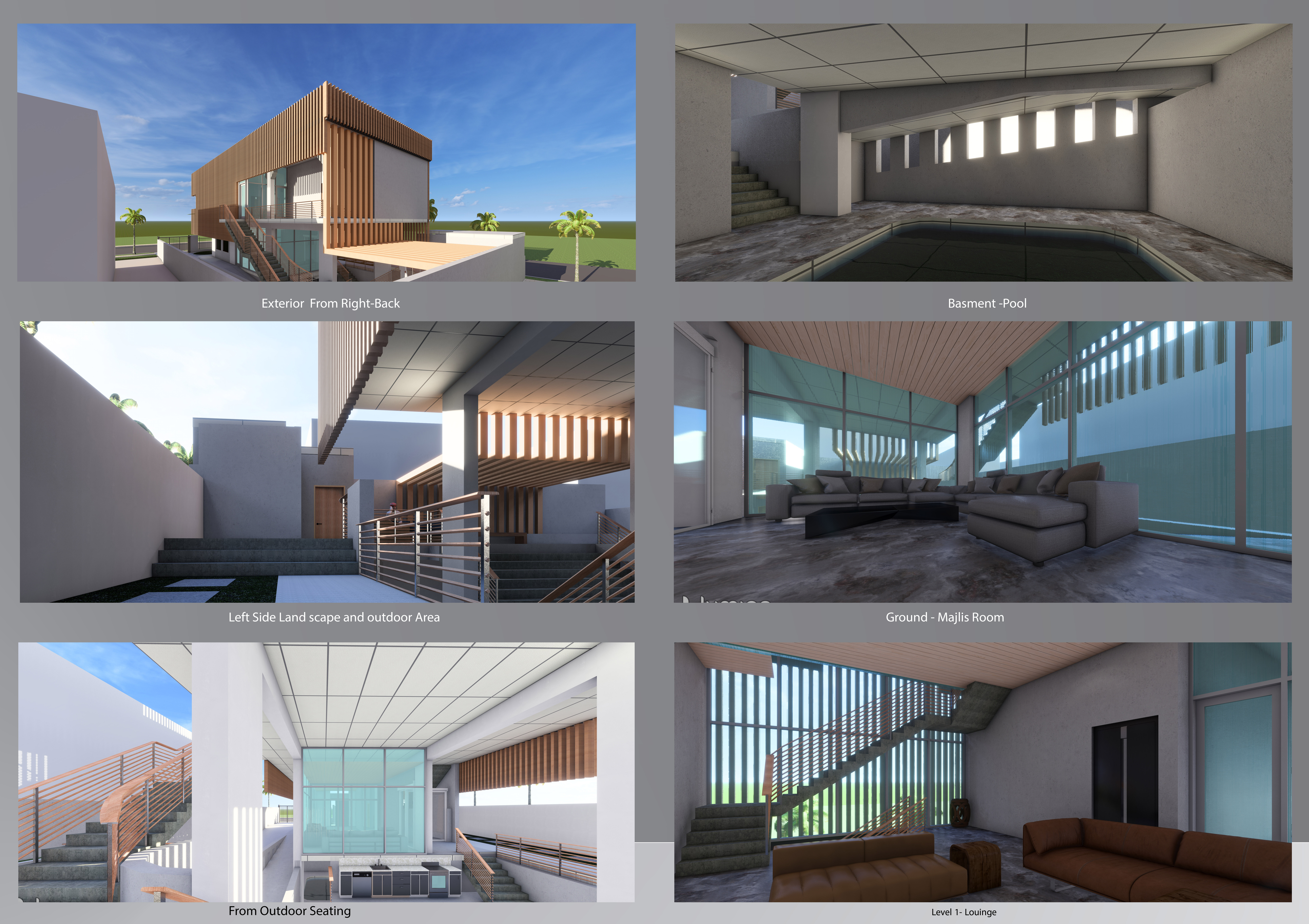5 key facts about this project
# Architectural Analysis Report: House of the Future, Dubai
## Overview
Located in Dubai, the House of the Future reinterprets traditional Arab and Islamic architectural elements while integrating modern living standards. This residential design exemplifies how cultural heritage can coexist with contemporary lifestyle needs. By emphasizing hospitality, family orientation, and sociability, the design intends to foster familial connections in an evolving urban context.
## Adaptive Spatial Strategy
The layout of the house is characterized by flexibility and adaptability. It accommodates various family configurations by including optional spaces such as a swimming pool and additional kitchen facilities, tailored to suit specific lifestyle needs. The design features a thoughtful organization of spaces across multiple levels, with the basement housing multifunctional areas and the ground floor dedicated to social and communal interactions through open guest rooms and a Majlis, which cater to gender-specific gatherings. The upper floor includes four en-suite bedrooms designed for privacy while maintaining communal relationships, complemented by a spacious balcony that enhances the connection to outdoor environments.
## Material Selection and Sustainability
Materials have been carefully chosen for both their structural properties and aesthetic appeal. The primary structural element is concrete, ensuring durability, while sandwich panels are utilized for insulating non-load-bearing walls. Prominent use of glass enhances transparency, allowing natural light to permeate the interior spaces and creating a visual connection with the outdoors. The wooden facade features vertical slats that provide shading, contributing to an aesthetically warm environment, and metal components in structural support and finishing emphasize contemporary design elements. Additionally, sustainable strategies include efficient natural ventilation and shaded areas to mitigate the effects of Dubai's warm climate, embodying an environmental consciousness central to the design’s objectives.






















































